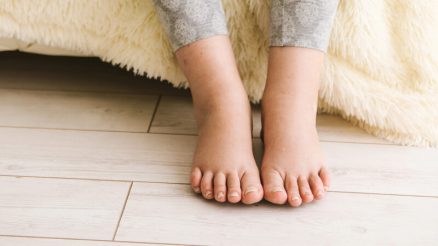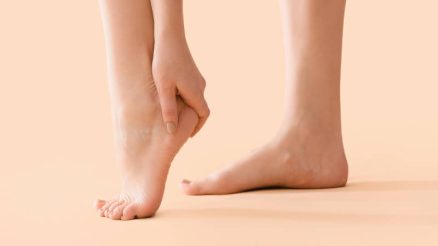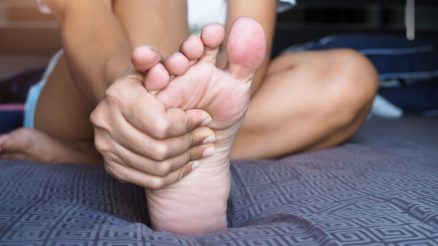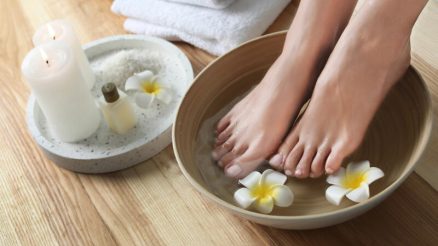As we gracefully age, our bodies undergo numerous changes, and our feet are no exception. Often overlooked, our feet bear the brunt of a lifetime of walking, standing, and supporting our entire body weight. With age, they become more susceptible to a range of issues, from dry skin and brittle nails to more serious conditions like arthritis and neuropathy. Prioritizing foot care as we get older isn’t just about comfort; it’s crucial for maintaining mobility, independence, and overall quality of life.
This comprehensive guide will walk you through the common challenges aging feet face and provide practical, actionable tips to keep them healthy, comfortable, and ready for whatever life throws your way.
Why Are Our Feet So Important as We Age?
Our feet are complex structures, each containing 26 bones, 33 joints, and over 100 muscles, tendons, and ligaments. They act as our foundation, shock absorbers, and propulsion system. As we age, several factors can impact their health:
- Loss of Fat Padding: The natural fatty padding on the soles of our feet thins, reducing cushioning and increasing pressure on bones and joints.
- Reduced Circulation: Blood flow can decrease, leading to slower healing, colder feet, and an increased risk of infections.
- Nerve Changes: Neuropathy (nerve damage), often associated with conditions like diabetes, can reduce sensation, making it harder to detect injuries or pressure points.
- Joint Degeneration: Arthritis is common, causing pain, stiffness, and deformity in foot joints.
- Skin and Nail Changes: Skin can become thinner, drier, and more prone to cracks, while nails may thicken, become brittle, or discolored.
- Muscle Weakness: Muscles and ligaments can weaken, affecting arch support and stability.
Ignoring these changes can lead to pain, falls, and a significant reduction in mobility.
Common Foot Problems in Older Adults
Understanding the issues that commonly affect aging feet is the first step toward effective care:
- Dry Skin and Cracked Heels: Reduced oil production and circulation can lead to excessively dry, flaky skin, especially on the heels, which can crack and become painful or infected.
- Thickened or Brittle Nails: Nails can become harder to cut, discolored, and more prone to fungal infections.
- Bunions and Hammertoes: These deformities, often exacerbated by ill-fitting shoes over time, can cause significant pain and difficulty walking.
- Corns and Calluses: Areas of thickened skin develop due to friction and pressure, often from footwear or foot deformities.
- Arthritis: Osteoarthritis and rheumatoid arthritis can affect the many joints in the feet, causing pain, swelling, and stiffness.
- Peripheral Neuropathy: Nerve damage, particularly in those with diabetes, can cause numbness, tingling, burning sensations, or a complete loss of feeling, making injury detection difficult.
- Edema (Swelling): Swelling in the feet and ankles can be a sign of various underlying health issues, including heart or kidney problems, or simply prolonged standing.
- Ingrown Toenails: Nails that grow into the surrounding skin can cause pain, redness, and infection.
- Fungal Infections (Athlete’s Foot, Onychomycosis): These are common, especially in warm, moist environments, and can cause itching, scaling, and discolored nails.
Daily Care Tips for Healthy Aging Feet
A consistent daily routine is key to preventing problems and addressing minor issues before they escalate.
- Daily Washing and Drying:
- Wash your feet daily with mild soap and lukewarm water.
- Pay special attention to cleaning between the toes.
- Crucially, dry your feet thoroughly, especially between the toes, to prevent fungal infections.
- Moisturize Regularly:
- Apply a good quality foot cream or moisturizer daily to keep skin hydrated and prevent dryness and cracking.
- Avoid applying moisturizer between the toes, as this can create a moist environment conducive to fungal growth.
- Inspect Your Feet Daily:
- Make it a habit to check your feet every day for cuts, blisters, redness, swelling, splinters, or any changes in skin or nail appearance.
- If you have difficulty bending, use a mirror or ask a family member for help. This is especially vital for individuals with diabetes or neuropathy.
- Trim Nails Carefully:
- Trim toenails straight across, not too short, and avoid cutting down the sides or corners, which can lead to ingrown toenails.
- Use clean, sharp nail clippers.
- If nails are thick or difficult to cut, consider seeking help from a podiatrist.
- Gentle Exercise and Movement:
- Regular foot and ankle exercises can improve circulation, flexibility, and strength. Simple movements like ankle circles, toe wiggles, and calf stretches can make a big difference.
- Elevate your feet when resting to reduce swelling.
The Importance of Proper Footwear
Your choice of shoes is paramount for aging feet. Ill-fitting or unsupportive footwear can exacerbate existing problems and create new ones.
- Choose Comfort Over Fashion: Opt for shoes that are comfortable, supportive, and provide ample room for your toes.
- Low Heels and Wide Toe Boxes: Avoid high heels. Look for shoes with a low, broad heel and a wide, deep toe box that doesn’t compress your toes.
- Good Arch Support: Ensure your shoes offer adequate arch support. If not, consider over-the-counter or custom orthotics.
- Secure Fastenings: Shoes with laces, Velcro straps, or buckles provide better stability than slip-ons, reducing the risk of falls.
- Breathable Materials: Choose shoes made from breathable materials like leather or mesh to help prevent moisture buildup and fungal infections.
- Socks Matter: Wear clean, dry socks made of moisture-wicking materials (like cotton blends or synthetic fibers). Avoid tight elastic bands that can restrict circulation.
When to Seek Professional Help (Podiatrist)
While daily care is essential, there are times when professional intervention is necessary. A podiatrist (foot specialist) can diagnose and treat a wide range of foot conditions.
Consult a podiatrist if you experience:
- Persistent pain in your feet or ankles.
- Changes in skin or nail color or texture that don’t resolve.
- Numbness, tingling, or burning sensations.
- Open sores, cuts, or blisters that don’t heal, especially if you have diabetes.
- Difficulty walking or maintaining balance.
- Thick, ingrown, or fungal nails that are difficult to manage at home.
- Foot deformities causing discomfort.
Regular check-ups with a podiatrist are highly recommended for older adults, particularly those with chronic conditions like diabetes, arthritis, or circulatory issues.
Conclusion
Caring for your aging feet is an investment in your overall health and well-being. By adopting a consistent daily care routine, choosing appropriate footwear, and knowing when to seek professional help, you can keep your feet healthy, comfortable, and active for many years to come. Remember, your feet are your foundation – take good care of them, and they will continue to carry you through life’s journey.








